Abstract
The possible causes for the exclusion of Escherichia coli from the rumen ecosystem were investigated. Evidence presented indicates that oxidation-reduction potential, temperature, pH, CO2, volatile fatty acids, traces of heavy metals, and bacteriophage are not environmental factors which select against E. coli in the rumen ecosystem. The feeding of nutrients utilizable by E. coli to an artificially inoculated continuous-culture rumen ecosystem did not prevent the washout of the E. coli from the continuous cultures. The presence of an inhibitor of E. coli growth was demonstrated. High concentrations of rumen fluid (50 to 100%) were necessary to inhibit growth in Antibiotic Medium 3. The inhibitor may operate to control the growth of E. coli in the rumen ecosystem. Because of the presence of an inhibitor, the possibility that rumen fluid is deficient in nutrients to support the growth of E. coli cannot be eliminated.
Full text
PDF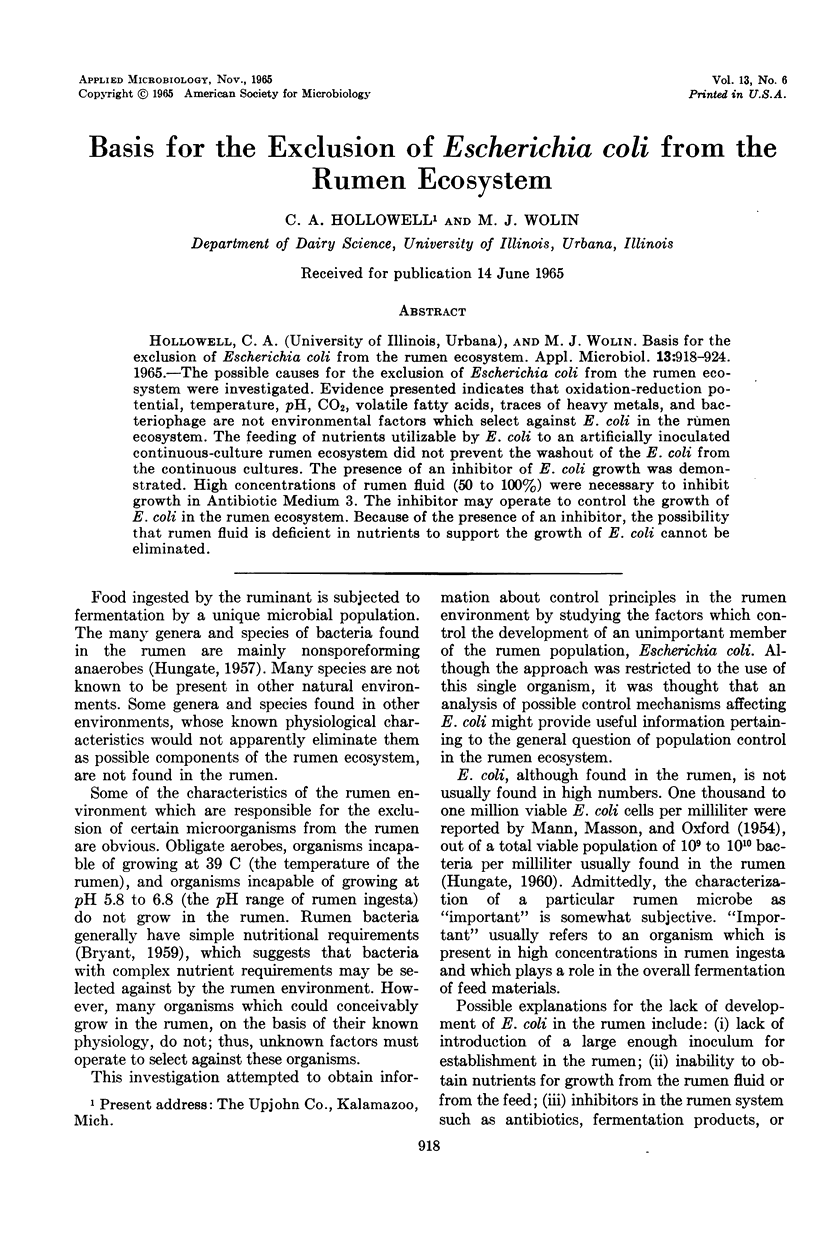
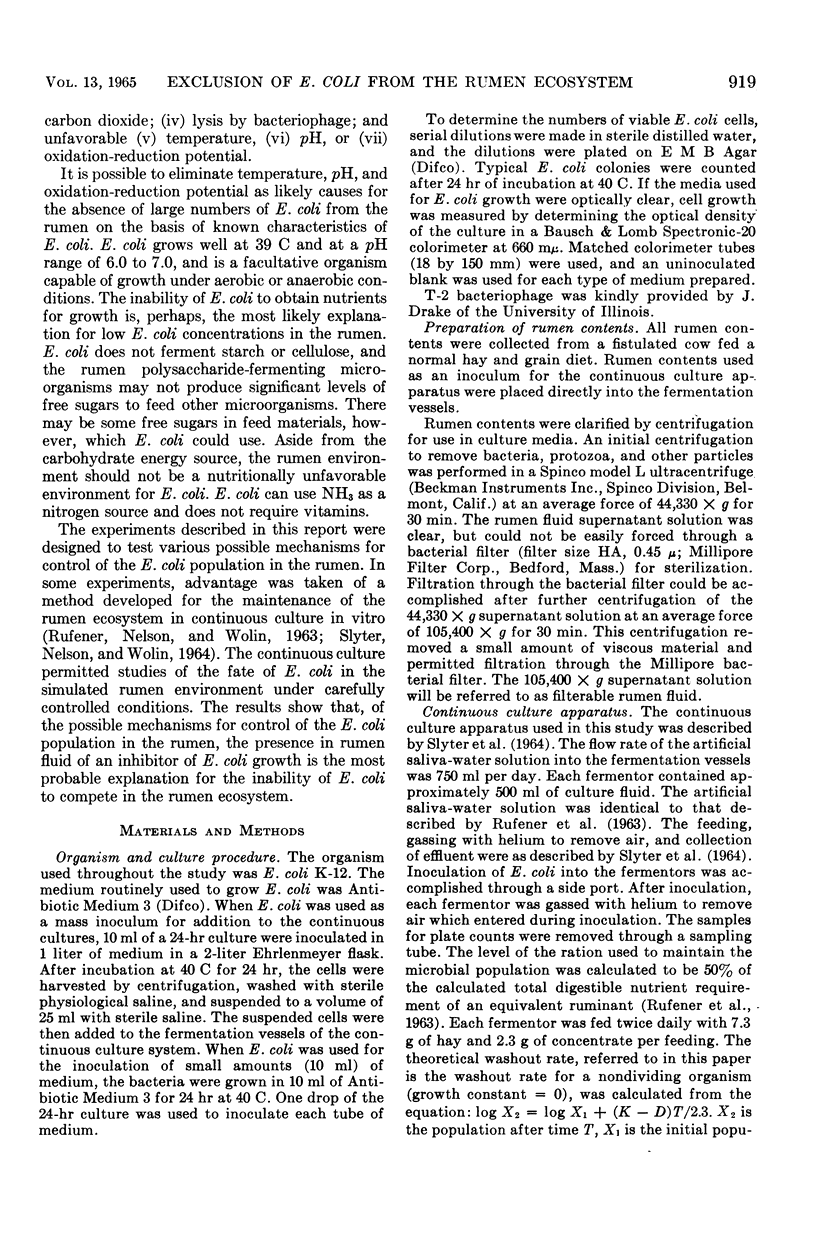
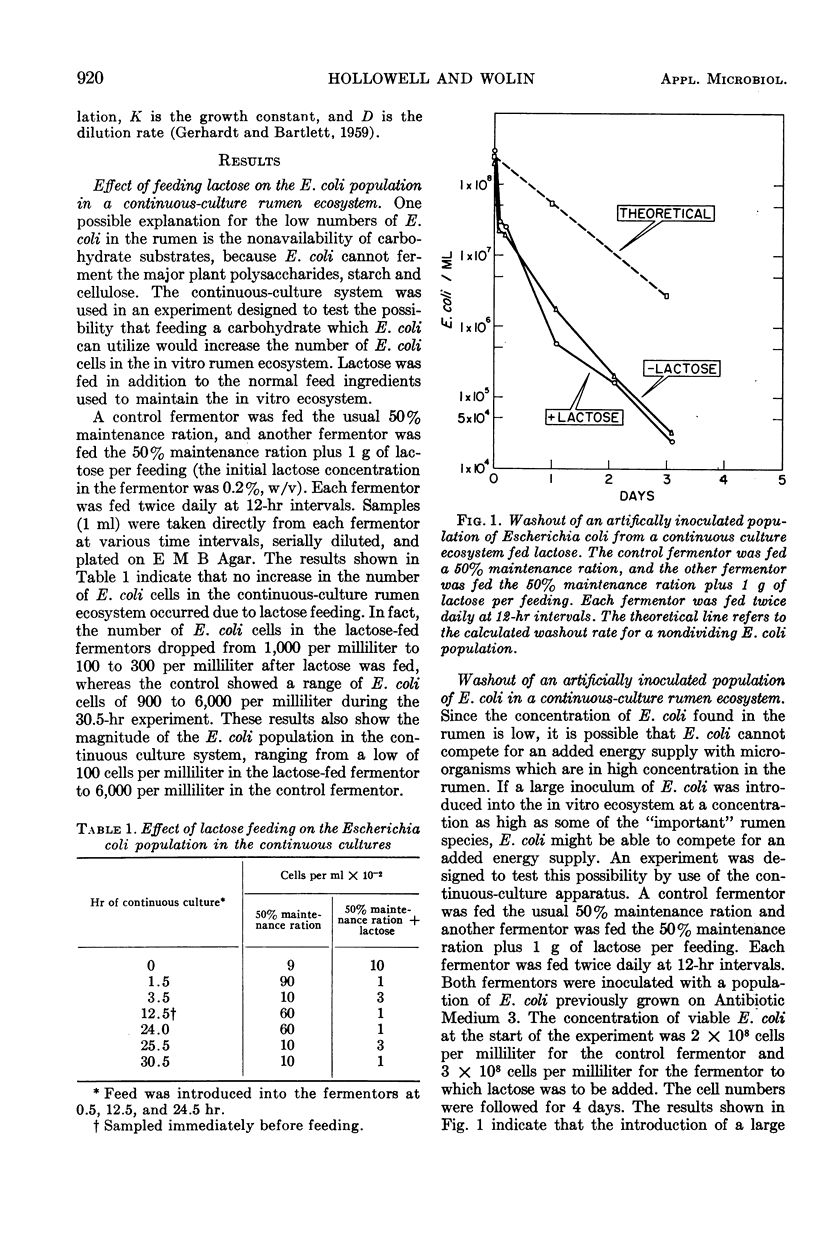
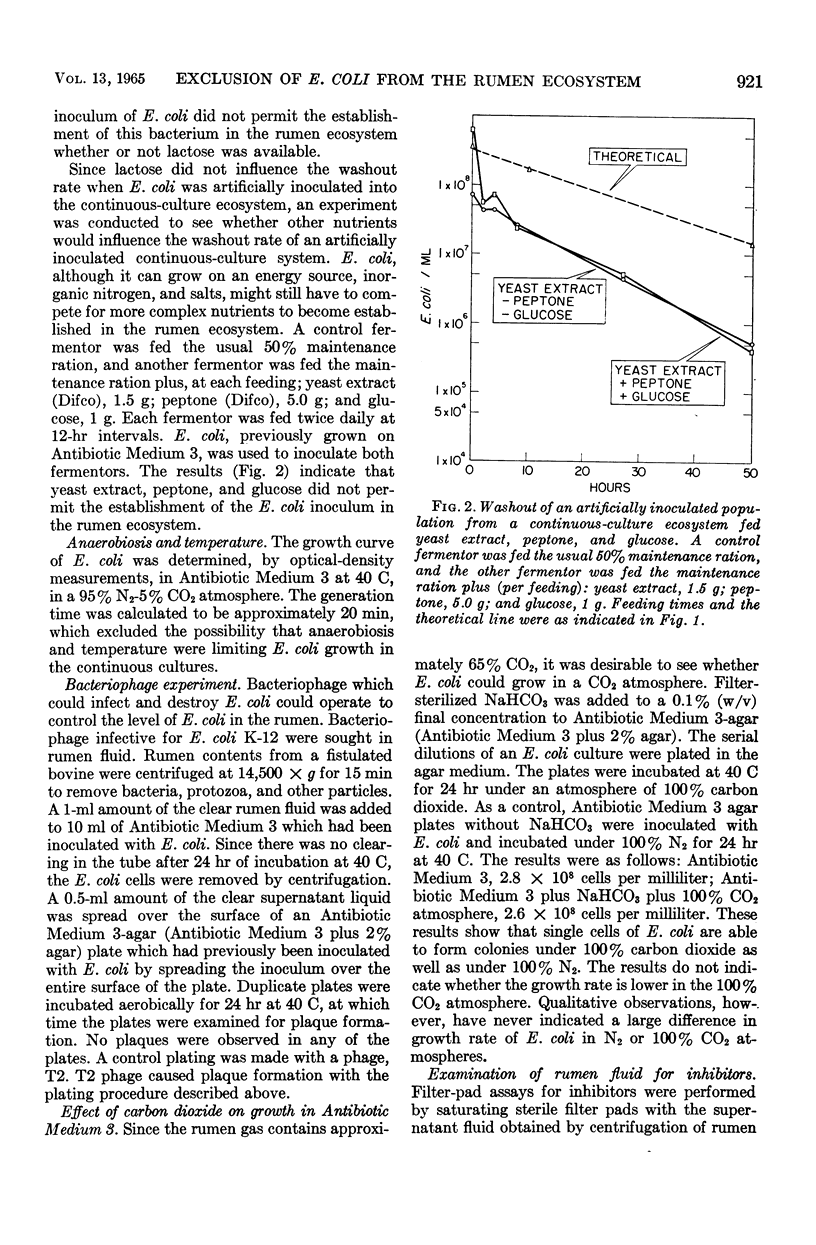
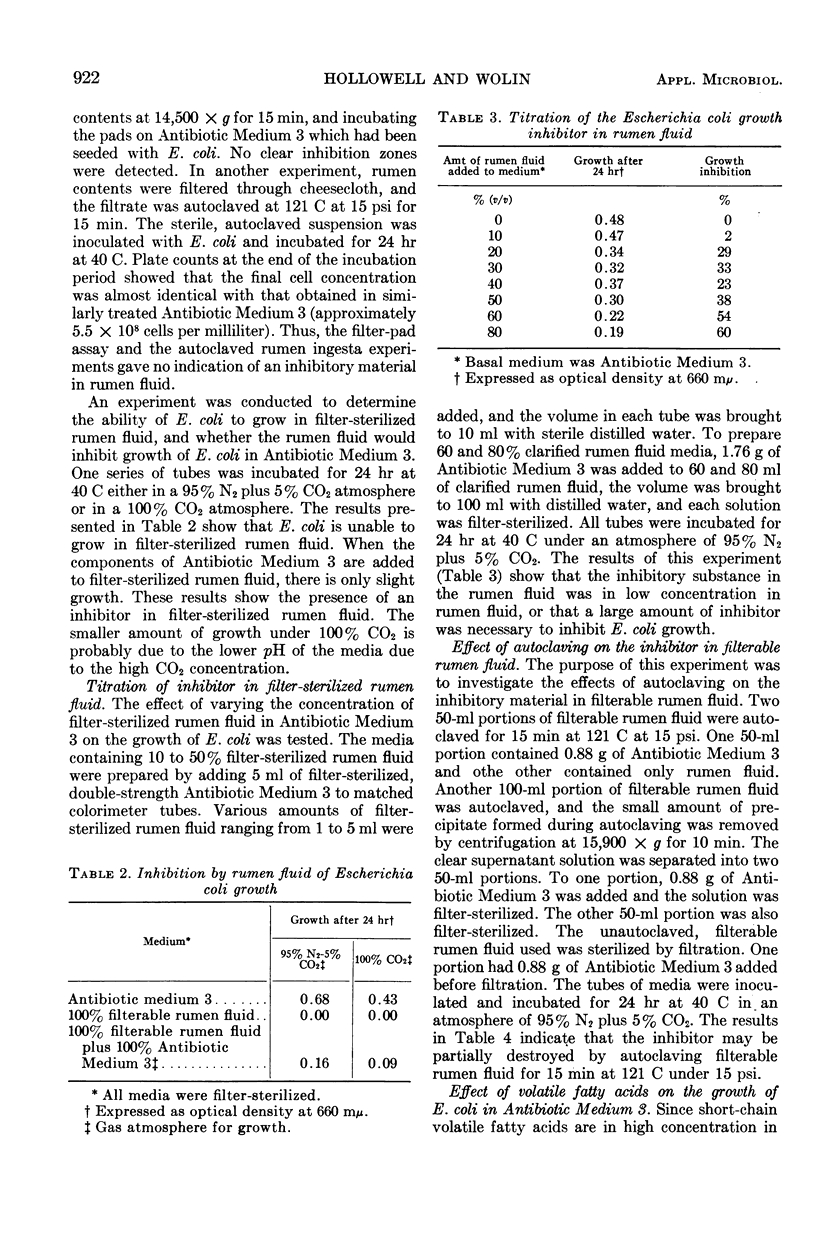
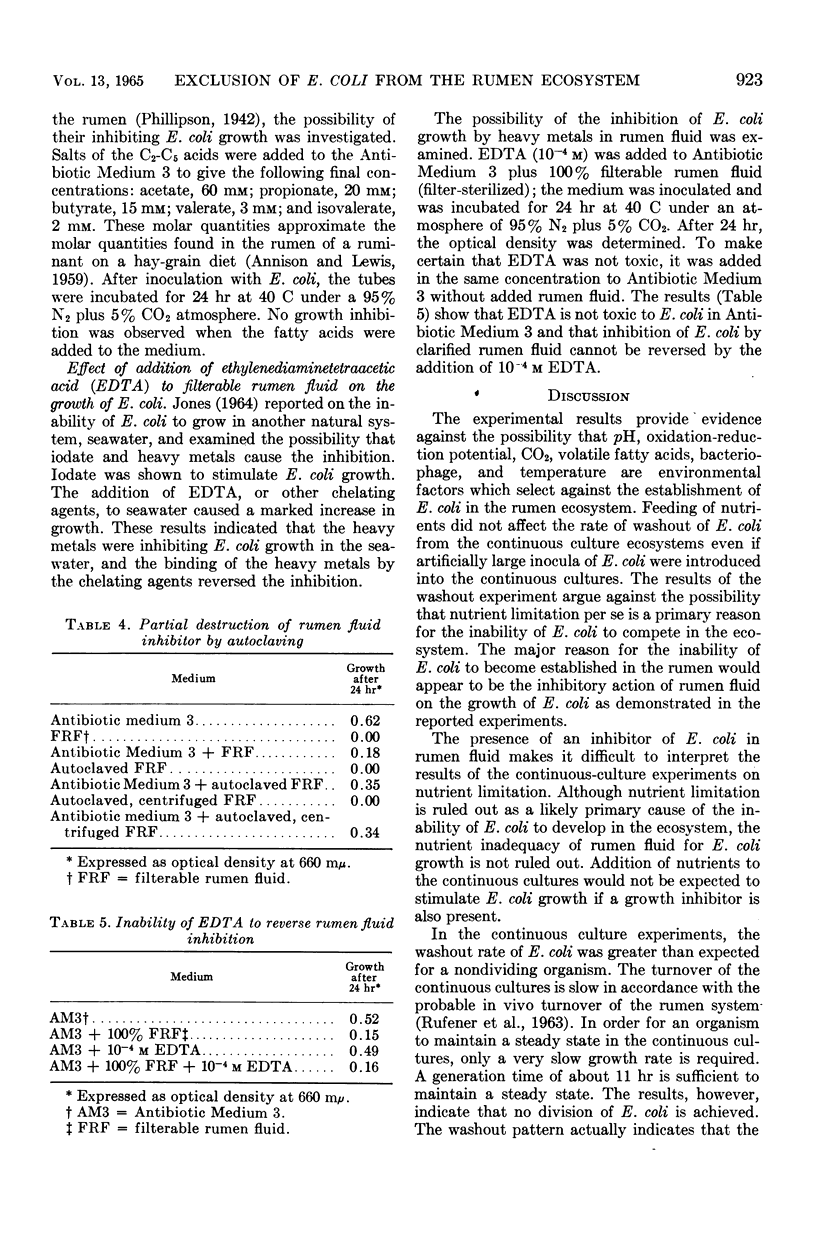
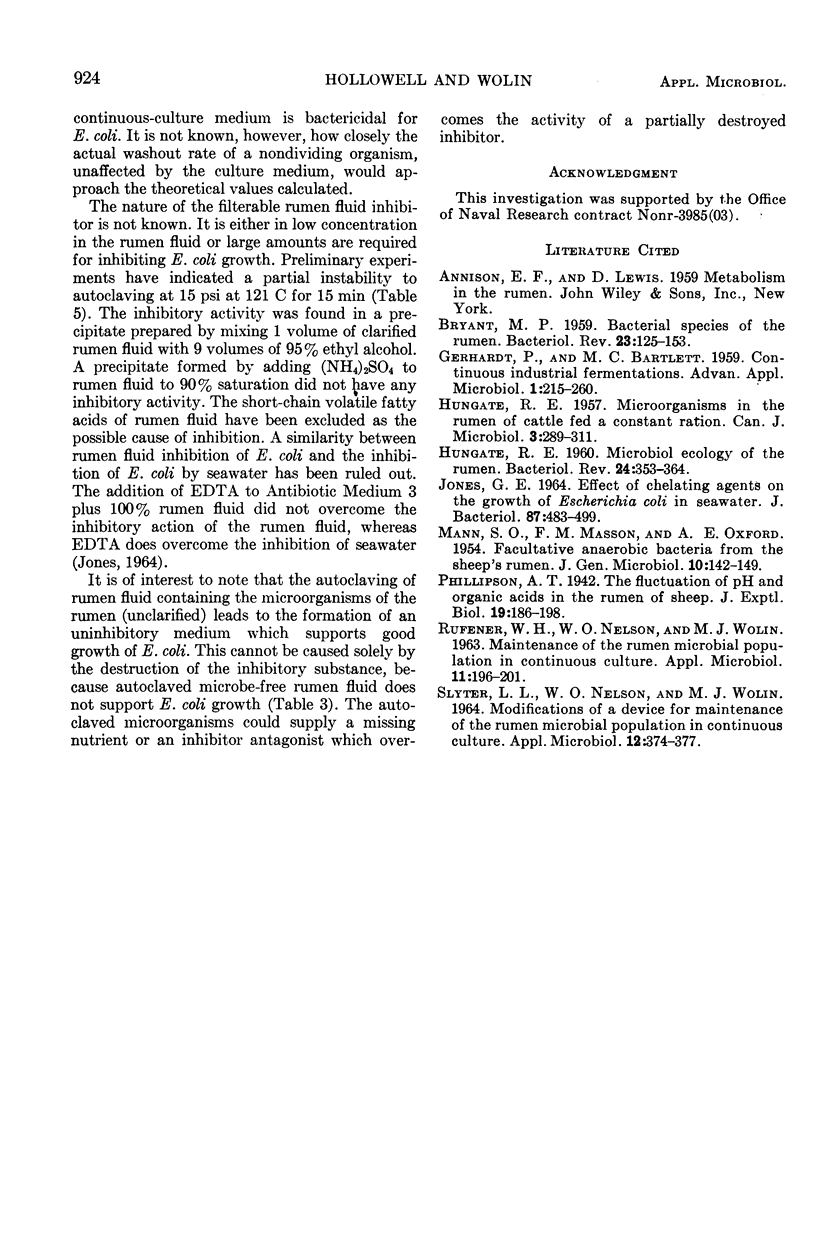
Selected References
These references are in PubMed. This may not be the complete list of references from this article.
- BRYANT M. P. Bacterial species of the rumen. Bacteriol Rev. 1959 Sep;23(3):125–153. doi: 10.1128/br.23.3.125-153.1959. [DOI] [PMC free article] [PubMed] [Google Scholar]
- GERHARDT P., BARTLETT M. C. Continous industrial fermentations. Adv Appl Microbiol. 1959;1:215–260. [PubMed] [Google Scholar]
- HUNGATE R. E. Microorganisms in the rumen of cattle fed a constant ration. Can J Microbiol. 1957 Mar;3(2):289–311. doi: 10.1139/m57-034. [DOI] [PubMed] [Google Scholar]
- HUNGATE R. E. Symposium: selected topics in microbial ecology. I. Microbial ecology of the rumen. Bacteriol Rev. 1960 Dec;24(4):353–364. doi: 10.1128/br.24.4.353-364.1960. [DOI] [PMC free article] [PubMed] [Google Scholar]
- JONES G. E. EFFECT OF CHELATING AGENTS ON THE GROWTH OF ESCHERICHIA COLI IN SEAWATER. J Bacteriol. 1964 Mar;87:483–499. doi: 10.1128/jb.87.3.483-499.1964. [DOI] [PMC free article] [PubMed] [Google Scholar]
- MANN S. O., MASSON F. M., OXFORD A. E. Facultative anaerobic bacteria from the sheep's rumen. J Gen Microbiol. 1954 Feb;10(1):142–149. doi: 10.1099/00221287-10-1-142. [DOI] [PubMed] [Google Scholar]
- RUFENER W. H., Jr, NELSON W. O., WOLIN M. J. Maintenance of the rumen microbial population in continuous culture. Appl Microbiol. 1963 May;11:196–201. doi: 10.1128/am.11.3.196-201.1963. [DOI] [PMC free article] [PubMed] [Google Scholar]
- SLYTER L. L., NELSON W. O., WOLIN M. J. MODIFICATIONS OF A DEVICE FOR MAINTENANCE OF THE RUMEN MICROBIAL POPULATION IN CONTINUOUS CULTURE. Appl Microbiol. 1964 Jul;12:374–377. doi: 10.1128/am.12.4.374-377.1964. [DOI] [PMC free article] [PubMed] [Google Scholar]


